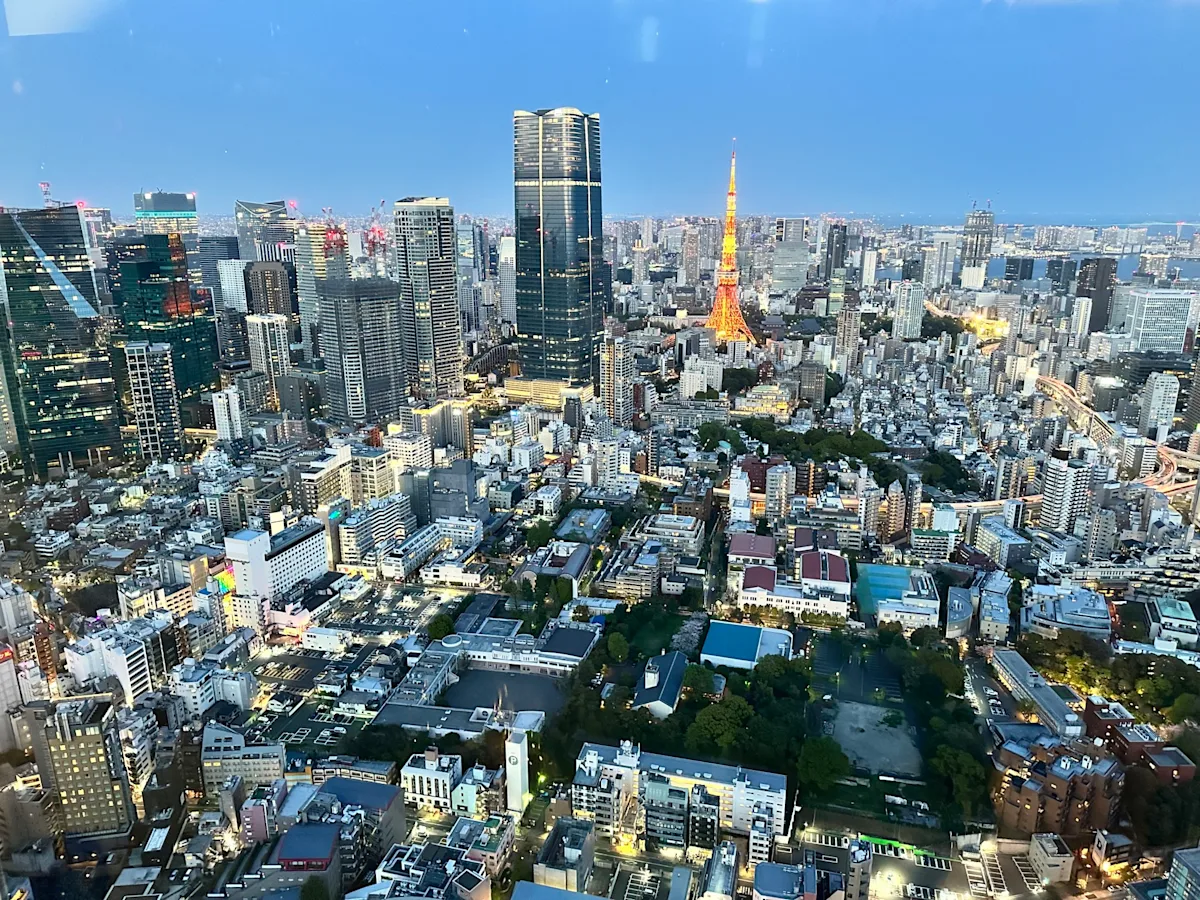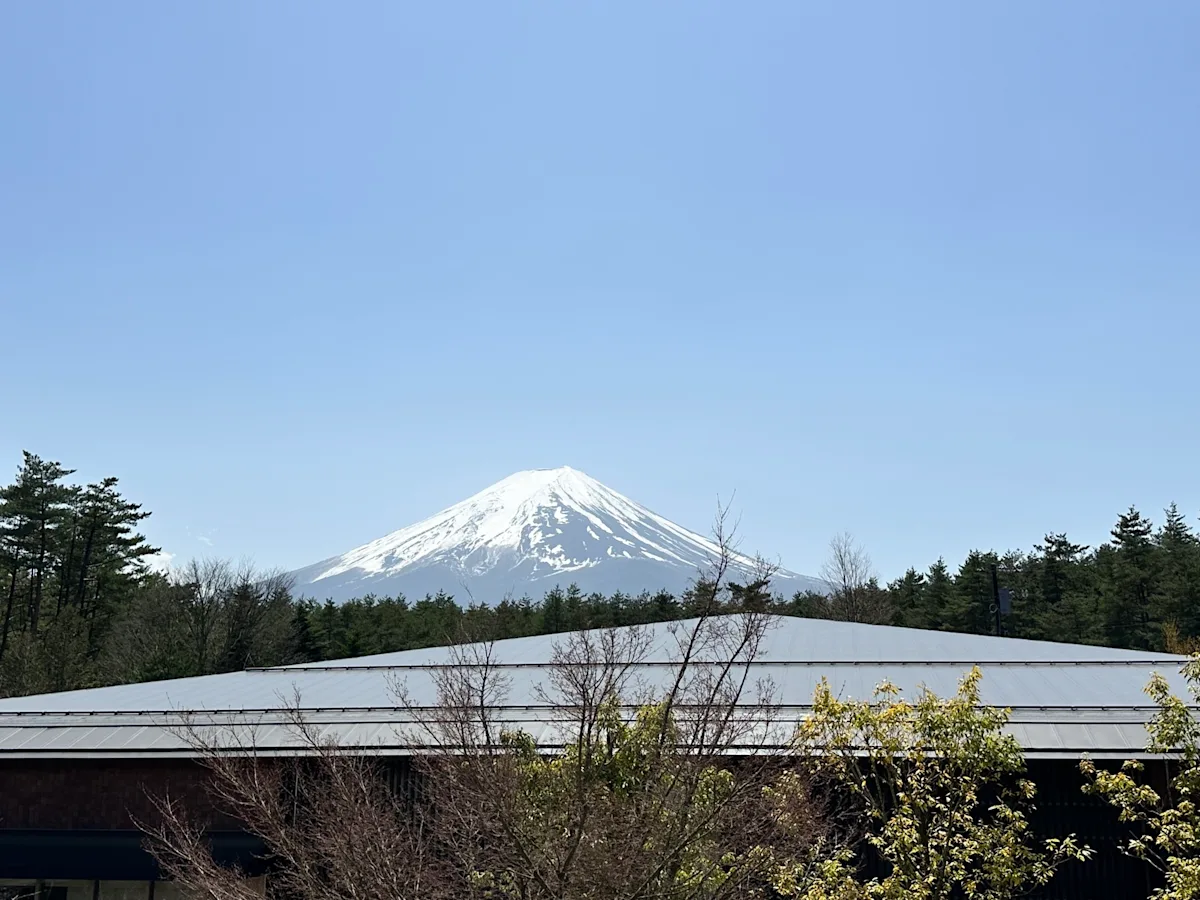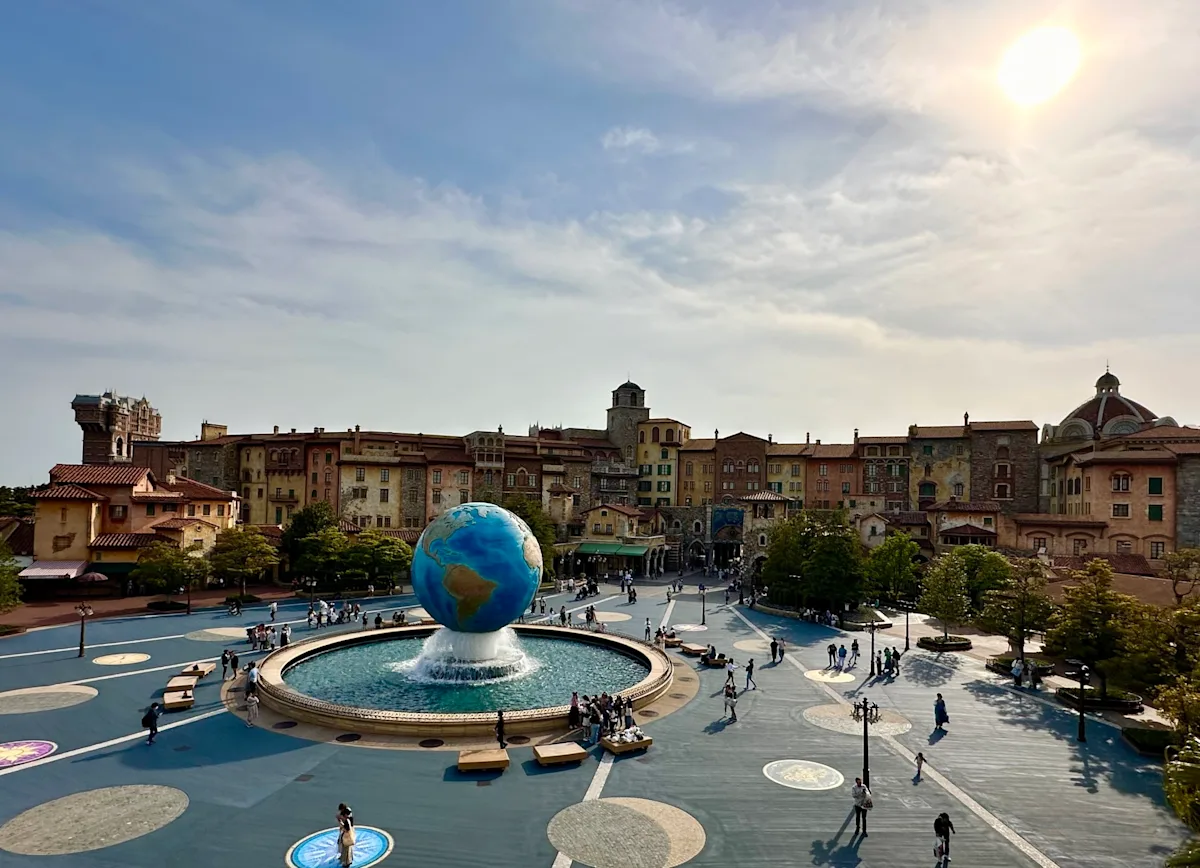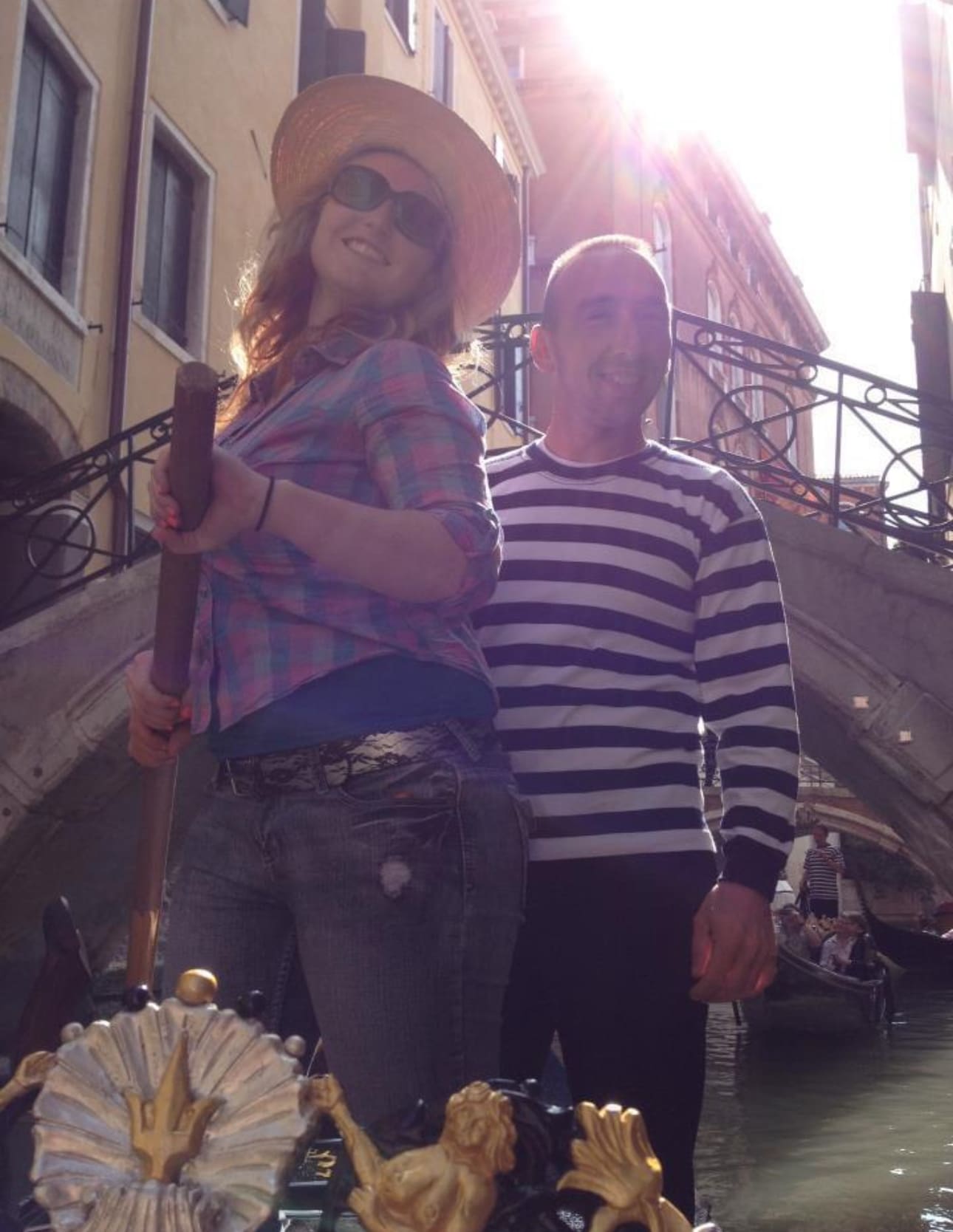
Curator’s statement
Exploring Japan is a dream for many, and this destination doesn’t disappoint. There is charm entwined in the marriage of deeply traditional culture and modern innovation. I was able to visit at the height of cherry blossom season, framing the country in a unique delight of nature. The country is rich in history, cuisine and technology, and it blends in a way of life that you don’t want to miss!
The Fora Difference
Book with Taylor to access exclusive perks and experiences on your trip.
Killer perks
Free upgrades, spa credits and more—we got you
Personalized recs
Customized travel planning for your style
Insider knowledge
Expert advice from people who’ve actually been there
Where to stay in Japan
Unlock perks by contacting Taylor to book your trip.
Nagoya: This is a bustling city, although largely industrial, about 2.5 hours southwest of Tokyo by Shinkansen bullet. If you are heading here, it would be easiest to fly into Chubu Centrair International Airport (NGO). Most notable is the nearby city of Suzuka, where the Formula One Japanese Grand Prix is held annually. Nagoya is an ideal option as a place to stay when attending the race. No matter where you stay in Japan, Suzuka Circuit does not lend itself to easy access.
The Four Points by Sheraton is located just mere steps outside the NGO airport and is also conveniently located near a 24-hour 7-Eleven.


Side note: Japan’s 7-Elevens, unlike its American counterpart, feature a wide variety of high-quality fresh food options that cater to the local palate. Additionally, they feature technology such as microwaves programmed to the packaged food options available and drink machines that can blend and pour fresh beverages on the spot. You’re truly never far from one of these — very convenient — convenience stores no matter where you are, and they enhance the quick-stop experience immensely.








While all of the properties mentioned were beautiful, the Four Points by Sheraton in Nagoya offered the most comfortable beds and highest quality breakfast. The breakfast buffet offered many local delicacies with English explanations, including details about what they are and how they are typically eaten; I enjoyed this deeply. I discovered ogura toast here, for which I will be forever grateful.
Directions to the track: Take the 45-minute ferry — station conveniently located outside the Four Points by Sheraton parking lot — over to Mie Prefecture. From here, hail a taxi to Tsu Train Station. Here, they will be offering train tickets to the Circuit. On race weekend, the stop Suzukasakitto-Ino will be very clear as the train will empty. From this point, you will be able to walk the remaining one-and-a-half miles to the Circuit entrance. In other words, it’s a trek, and you should prepare two to three hours of total travel time both coming and going.

Kyoto: This unassuming city is actually quite full of life. Quiet and serene, Kyoto is the former capital of Japan — before Tokyo — and ruled for much of its history as a country. There are many castles and temples to visit that will give you a window into this period. I would highly recommend Sunrise Tours for their half- or full-day bus tours.




Arriving by train at Kyoto Station will put you in a centrally located area within walking distance of tons to do. The Kyoto Station itself has 12 floors available for shopping and dining, aside from its rail lines. Kyoto is also known for being the birthplace of omurice, a popular local dish of omelet served over — usually ketchup-flavored — fried rice.
Food tip: Don’t miss Kichi Kichi Omurice, where famed chef Motokichi Yukimura is known for some of the best omurice in Japan. His restaurant only takes same-day reservations and is beloved for his version of a demi-glace omurice that tops the charts.
We stayed at the Kyoto Century Hotel, just a two-block walk from the train station. This is a beautiful property full of elegance and charm and features a great breakfast buffet and evening bar. I even found a new favorite cocktail here, which is one part bourbon to one part amaretto. This was a lovely and private atmosphere to relax in the evening after a full day of exploring.
One of the can’t miss stops in Kyoto is Nishiki Market. About a mile from the hotel, it’s tucked just behind the city’s main luxury shopping Shijo-dori street and boasts lots of street food and souvenir and artisan shops. There are also several experience-based stalls that invite you to play with mini-pigs, Shiba Inu puppies and even river otters. I opted for the otters myself. They’re so happy and friendly, and I just love them. I couldn’t resist. Nishiki Market, in general, offers a great way to get lost in the local shopping culture for a bit.
Temple tip: There are many amazing temples in Kyoto, but two soar to the top of the list: Fushimi Inari and Kiyomizu-dera.
Fushimi Inari is tucked centrally in the city, but envelops you in an opportunity to explore woods and nature. This temple of 1,000 gates is a great opportunity for hikers to journey up a mountain with excellent street food and shops. I recommend stopping here for a giant pastry-cream-flavored mochi with a strawberry sitting sweetly in the middle.
Kiyomizu-dera is located on the northeast side of the city on top of a large hill. It offers a more accessible scenic view of the city and is very peaceful and quaint without getting too much off the beaten path. There’s also wonderful souvenir shopping and street food, with my top pick being a giant crab leg stick painted with fresh butter.
Sunrise Tours offers a full-day tour leaving from the basement of Avanti Center, which visits both of these and more!
Osaka: Only 30 minutes from Kyoto by Shinkansen train, we took a day-trip to Osaka to visit Universal Studios and Super Nintendo World. It was exceptional. All of the best details were captured in life-size recreations of Super Mario and friends’ most recognizable landmarks. We also got to ride Super Mario Kart, and the technology here is unmatched. By far one of the coolest experiences we had, and totally worth the novelty. I left with a souvenir of Yoshi riding coolly on my headband.
From here, we headed to Dotonburi, a district that is reminiscent of Times Square in New York City. Full of nightlife and advertising screens, this was a neat urban spot. Here we discovered our first Book-Off location, multiple stories of unbelievable deals on electronics and gaming systems to designer goods on the cheap. We also headed to a spot on the river to dine, which turned into a can’t miss.
Food tip: Make sure to stop by Motokara Smoked Bar on the river. The fried chicken and smoked ramen were, bar none, the best meals we had in all of Japan.
Hiroshima: Arriving by Shinkansen train, the Hotel GranVia Hirsoshima is attached to the station. In addition to its convenient location, the property is elegant and offers premium city views from its rooms. Hiroshima felt closest to an average and modern US city.
Local travel by trolley made it easy to sight-see. The Hiroshima National Peace Memorial Museum was a moving experience. From the museum, you can see the remains of an original European-style government building at ground zero, their flame monument to signify peace and the water memorial to those lost in the bombing. The flame will only be extinguished when all nuclear weapons in the world are destroyed.
Traveling through the area are many rivers that break up the city, and in cherry-blossom season it offers many unmissable views. The city has a relaxed atmosphere that makes it easy to explore at a leisurely pace.
Food tip: Hiroshima is known for its local version of okonomiyaki, which is best described as a savory pancake of noodles, egg, meat, cheese and various sauces. It is prepared on a griddle and served Hiroshima-style, meaning it’s layered as opposed to mixed. While you can find this dish in many parts of Japan, I would highly recommend trying it where it was created. This was also one of our best food discoveries of the trip.
From the Peace Park area, we took a bus to the train station that would carry us to the ferry port to head to Miyajima Island.
Miyajima Island: This small island is just a ferry ride away from Hiroshima and is one of the best-hidden magical spots we explored. Please don’t miss an opportunity for this excursion as part of a day-trip! It is home to the floating Torii Gate, as well as many temples. Friendly deer also freely roam the island. They love pets and healthy snacks.
This is a quaint area where there is much to explore in nature, as well as peruse and enjoy artisan shopping and snacks. We found a cafe that served a coffee-flavored ice-cream cone topped with espresso powder that was a really lovely treat, and also took home some locally roasted coffee. On a trip full of action-packed days, this day was peaceful and truly one of my favorites.
Toyko: If you have visions of Tokyo as crowded train stations and bustling streets, prepare to be unsurprised — that’s real. As the world’s most populous city, it can be a little overwhelming to jump right into for even the most traveled. That’s just part of the magic.
We stayed at Keio Plaza Hotel in Shinjuku, a popular tourist neighborhood and home to the world’s busiest train station. Shinjuku is known for its shopping, business and food. While I honestly found this environment a little overstimulating at night, it’s a can’t-miss experience to at least visit this area. Our hotel offered stellar views of the city as well as in-room Shiatsu massages and high-end dining options.
It was also from the main floor of the property that we met back up with Sunrise Tours for a guided full-day tour through the Mt. Fuji and Hakone area. This was a wonderful day trip by coach bus, and the natural beauty of the area is worth every penny and ounce of effort to see it through. Additionally, given local concerns about tourism in the Mt. Fuji region, a tour may be your best option for guaranteed views of the mountain. After a long day of breathtaking views, we headed back to the city by Shinkansen train — tickets covered by the tour.
Continuing to explore the city, we visited areas including Asakusa, Shibuya, Minato and Aoyama. Each neighborhood delivers on a unique vibe.
Asakusa is in the eastern part of the city, known for the Senso-ji Temple. It’s a great place to shop for tourist souvenirs, as many other places in the city don’t cater to this. You can also find great food at a low cost, unlike some of the more crowded neighborhoods.
Shibuya is known for Shibuya Crossing, one of the most recognizable landmarks of Tokyo to any foreign eye. It’s definitely worth the trek to this area to say you’ve crossed the diagonal walkway. Once you’re in the heart of the area, you’ll find street shopping and dining opportunities. It will be easy to get lazily lost in the hustle and bustle.
Minato is home to Tokyo Tower, a sister of sorts to the famed Eiffel Tower. While slightly less well-known, it’s no less majestic. For just a few dollars, you can journey to the top of a nearby observation deck in Roppongi Hills and see stunning 360 views of the whole city — including the tower.
Aoyama is famed for its upscale shopping and dining experiences. The Omote-Sando Boulevard on the Aoyama side is home to eye-catching architecture and many storefronts of the world’s most luxurious brands. Even if you’re not planning to grab your wallet for Tokyo’s finest, it’s definitely worth a stroll. The tree-lined street is peaceful and there’s plenty of people watching for free. If you walk it all the way to the end, it will drop you off at the mouth of Yoyogi Park, which leads under many large Torii gates to the Meiji Jingo Shinto shrine.
Tokyo Disney: Located on the outskirts of the city, this Disney park is a must-do. There is a train from the city dedicated to this drop-off point and it’s not difficult to get to. Because of the strength of other currency against the Yen, it’s a very cost-effective way to maximize the Disney experience. Plus, it’s two parks — Disneyland and DisneySea!
Disneyland offers a compact version of most of the same attractions that Disney World's Magic Kingdom offers stateside, but the real gem of this stop is DisneySea. While not a water park, the park is focused around water design and has a very peaceful aura. It boasts many Disney rides no longer found in the US. Upon entering the park, you will notice a beautiful Italian-Mediterranean facade that opens into other-world neighborhoods. Most notably, Aladdin gets its own themed area of the park. Inspired by Middle-Eastern design and fare, I found it to be the most unique and enchanting part of the park. The caramel-mango-churro sundae didn’t hurt either.
Other honorable mentions include the space dedicated to New York City and Toy Story Mania. DisneySea also offers themed shows on the pond in the middle of the park, including a dazzling fireworks display in the evenings. Overall, it’s a great experience and a fantastic way to end your journey.
Japan is such a beautiful place, and I thank them for letting me experience it.
Need to know
You may see recommendations from travel sites or others you have known to visit Japan to travel light. This is because laundry services will be available, and Japan’s rail lines don’t tend to accommodate large baggage, at least not without an extra fee. However, we were caught off guard by a couple of unexpected experiences. In one hotel, which offered a price-per-piece laundry service, we made the mistake of not doing the math beforehand and a single load of laundry cost us $72. In another hotel, which offered an on-site laundromat, we found only a few machines. While they were true coin laundry, even late at night, we had to wait for a machine. Since they were combo washer-and-dryers, it took over three dryer cycles to get our clothes mostly dry. My personal recommendation would be to reconsider how bothered you might be to pay the few extra dollars for storage space on the train, and the lugging around of a larger bag. If we return, we will bite the bullet on this.
The Japan Rail pass is essential. Shinkansen train lines are not necessarily just for larger city-to-city travel. If you are city-hopping at all while in Japan, definitely consider this pass for easy access to any regional areas.
Local Japanese food is not the same as its Americanized sister. Most sushi is eaten as plain strips of fish over rice, and you are unlikely to come across fancy sushi rolls. Hibachi is also not widely practiced in local cuisine, at least not outside upscale steakhouses. Fret not, though. The food is still exceptional, and wagyu beef is easy to come by as well. There’s a lot of amazing food experiences, and usually the food is quite cheap.
This trip report is part of our ongoing series on travel to Japan. In need of further inspiration? Check out Adeline Kuroki’s guide, History and Culture in Japan.

Travel Advisor
Taylor Han

Get in touch with Taylor
Did you like this guide? Reach out to customize and book your own experience. Or, just to chat about travel in general.
You can normally expect a response from Taylor within a business day or so. You’ll also be subscribed to our travel newsletter (you can unsubscribe at any time).